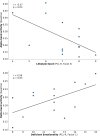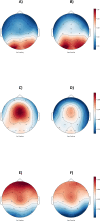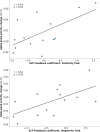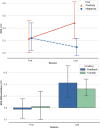Balancing the brain of offenders with psychopathy? Resting state EEG and electrodermal activity after a pilot study of brain self-regulation training
- PMID: 33411746
- PMCID: PMC7790284
- DOI: 10.1371/journal.pone.0242830
Balancing the brain of offenders with psychopathy? Resting state EEG and electrodermal activity after a pilot study of brain self-regulation training
Abstract
Although investigation of the brains of criminals began quite early in the history of psychophysiological research, little is known about brain plasticity of offenders with psychopathy. Building on our preliminary study reporting successful brain self-regulation using slow cortical potential (SCP) neurofeedback in offenders with psychopathy, we investigated the central nervous and autonomic peripheral changes occurring after brain self-regulation in a group of severe male offenders with psychopathy. Regarding the central nervous system, an overall suppression of the psychopathic overrepresentation of slow frequency bands was found, such as delta and theta band activity, after EEG neurofeedback. In addition, an increase in alpha band activity could be observed after the SCP self-regulation training. Electrodermal activity adaptively changed according to the regulation task, and this flexibility improved over training time. The results of this study point towards a constructive learning process and plasticity in neural and peripheral measures of offenders with psychopathy.
Conflict of interest statement
The authors have declared that no competing interests exist.
Figures







Similar articles
-
Brain Basis of Psychopathy in Criminal Offenders and General Population.Cereb Cortex. 2021 Jul 29;31(9):4104-4114. doi: 10.1093/cercor/bhab072. Cereb Cortex. 2021. PMID: 33834203 Free PMC article.
-
Reconciling discrepant findings for P3 brain response in criminal psychopathy through reference to the concept of externalizing proneness.Psychophysiology. 2014 May;51(5):427-36. doi: 10.1111/psyp.12189. Epub 2014 Mar 3. Psychophysiology. 2014. PMID: 24579849 Free PMC article.
-
Fairness norm violations in anti-social psychopathic offenders in a repeated trust game.Transl Psychiatry. 2019 Oct 21;9(1):266. doi: 10.1038/s41398-019-0606-3. Transl Psychiatry. 2019. PMID: 31636249 Free PMC article.
-
What Can We Learn About Psychopathic Offenders by Studying Their Communication? A Review of the Literature.J Psycholinguist Res. 2019 Feb;48(1):199-219. doi: 10.1007/s10936-018-9599-y. J Psycholinguist Res. 2019. PMID: 30151666 Review.
-
Risk reduction treatment of psychopathy and applications to mentally disordered offenders.CNS Spectr. 2015 Jun;20(3):303-10. doi: 10.1017/S1092852915000322. CNS Spectr. 2015. PMID: 25997606 Review.
Cited by
-
How standardized are "standard protocols"? Variations in protocol and performance evaluation for slow cortical potential neurofeedback: A systematic review.Front Hum Neurosci. 2022 Sep 2;16:887504. doi: 10.3389/fnhum.2022.887504. eCollection 2022. Front Hum Neurosci. 2022. PMID: 36118975 Free PMC article.
-
The effect of HD-tDCS on brain oscillations and frontal synchronicity during resting-state EEG in violent offenders with a substance dependence.Int J Clin Health Psychol. 2023 Jul-Sep;23(3):100374. doi: 10.1016/j.ijchp.2023.100374. Epub 2023 Feb 21. Int J Clin Health Psychol. 2023. PMID: 36875007 Free PMC article.
-
Multi-level treatment outcome evaluation in adolescents with autism spectrum disorder.Child Adolesc Psychiatry Ment Health. 2025 May 19;19(1):58. doi: 10.1186/s13034-025-00909-1. Child Adolesc Psychiatry Ment Health. 2025. PMID: 40389961 Free PMC article.
-
Virtual Reality-Guided Meditation for Chronic Pain in Patients With Cancer: Exploratory Analysis of Electroencephalograph Activity.JMIR Biomed Eng. 2021 Jun 24;6(2):e26332. doi: 10.2196/26332. JMIR Biomed Eng. 2021. PMID: 38907380 Free PMC article.
-
Using physiological biomarkers in forensic psychiatry: a scoping review.Front Psychiatry. 2025 Apr 29;16:1580615. doi: 10.3389/fpsyt.2025.1580615. eCollection 2025. Front Psychiatry. 2025. PMID: 40365003 Free PMC article.
References
-
- Hare RD. Hare Psychopathy Checklist-Revised. Toronto: Multi-Health Systems; 2003.
-
- Flor H, Birbaumer N, Hermann C, Ziegler S, Patrick CJ. Aversive pavlovian conditioning in psychopaths: peripheral and central correlates. Psychophysiology. 2002; 39: 505–18. doi: 10.1017.S0048577202394046 - PubMed
Publication types
MeSH terms
LinkOut - more resources
Full Text Sources
Other Literature Sources

